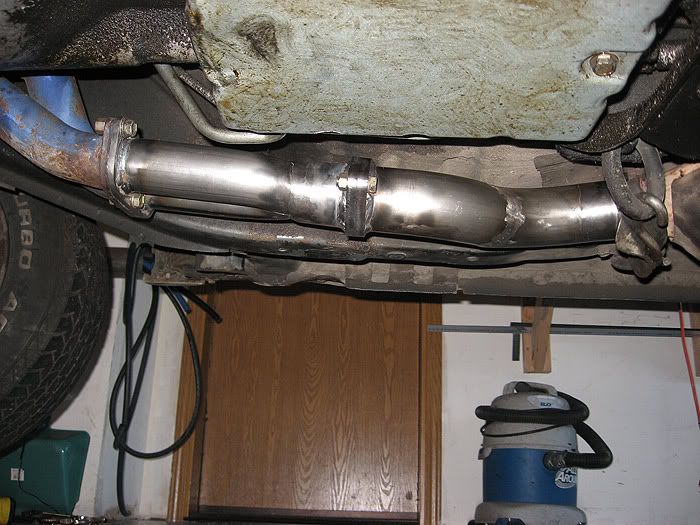How long should the collector pipe be? Well track or dyno time. Since most of us have to have cats. Lets stay legal the modified way:biglaugh: A good cat can act as a "pressure wave termination box" I'm using a small flow master. The length between the collector and the "pwtb" is your tune on the dyno or track mod! After the "pwtb" your exhaust is somewhat invisible to the engine.
Pressure Waves
With muffler flow requirements out of the way we can move on to methods of applying suitable capacity mufflers to the "system" without needless disruption of length-induced pressure wave tuning. Probably the best way to ease into this somewhat complex subject is to consider some of the published muffler test results done in recent years. These tests appeared to have shown that, sometimes, lower flow mufflers inducing at least some backpressure were required to make best power. In all such tests that I have studied, the conclusions (as apposed to the tests) were invalid. There turns out to be several reasons for this and all are relevant to building a near zero-loss exhaust system.
The first point canceling the supposed validity of back-to-back test results is due to the varied internal designs seen amongst the test pieces Fig. 8. Many mufflers are made up of a number of inter-connected chambers having varying degrees of access ease by the exhaust. Others are of the "glass pack" variety. These types represent opposite ends of a spectrum and have a substantially differing response to arriving pressure waves.
When we dealt with collector length it was emphasized that it was, in most cases, more critical than the primary pipe lengths. Adding a muffler (even one with zero backpressure) to a system with already optimized lengths can alter the pressure wave response such that the tuning is now out of phase with what is required and as a result, power drops. The trick here is to install mufflers such that they don't alter the tuned lengths of the system. Let us assume that the test muffler is attached directly to the end of the collector. A pressure wave is reflected either at the end of the exhaust pipe or when a sizable increase in cross-sectional area occurs. Open chambered mufflers such as Flowmasters often appear to the pressure wave much the same as the end of the pipe. This means the pressure waves see no change in length and reflection occurs largely as it did prior to the fitment of the muffler.
A glass pack muffler can act significantly different. It does not appear as a pipe end but as a substantial increase in collector length. Result: a reduction of power even though there is no measurable backpressure involved. From this we can see that many comparative muffler tests were in fact "pseudo pipe-length" tests. Although many invalid conclusions were drawn, these tests still demonstrated some important facts. The most important is that the engine's needs in terms of flow and pressure wave length tuning must be isolated, one from the other. This is easy to do by means of the pressure wave termination box (resonator box) mentioned earlier. Incorporating a resonator box into a system produces a layout along the lines seen in Fig. 9. With enough volume, the resonator box makes everything down stream appear invisible to the header's primary- and secondary-tuned lengths. With a flow capability of 2.2 cfm or more, the muffler appears virtually invisible from a flow standpoint. As a result, we have a muffled system that produces virtually the same power as an open exhaust.







